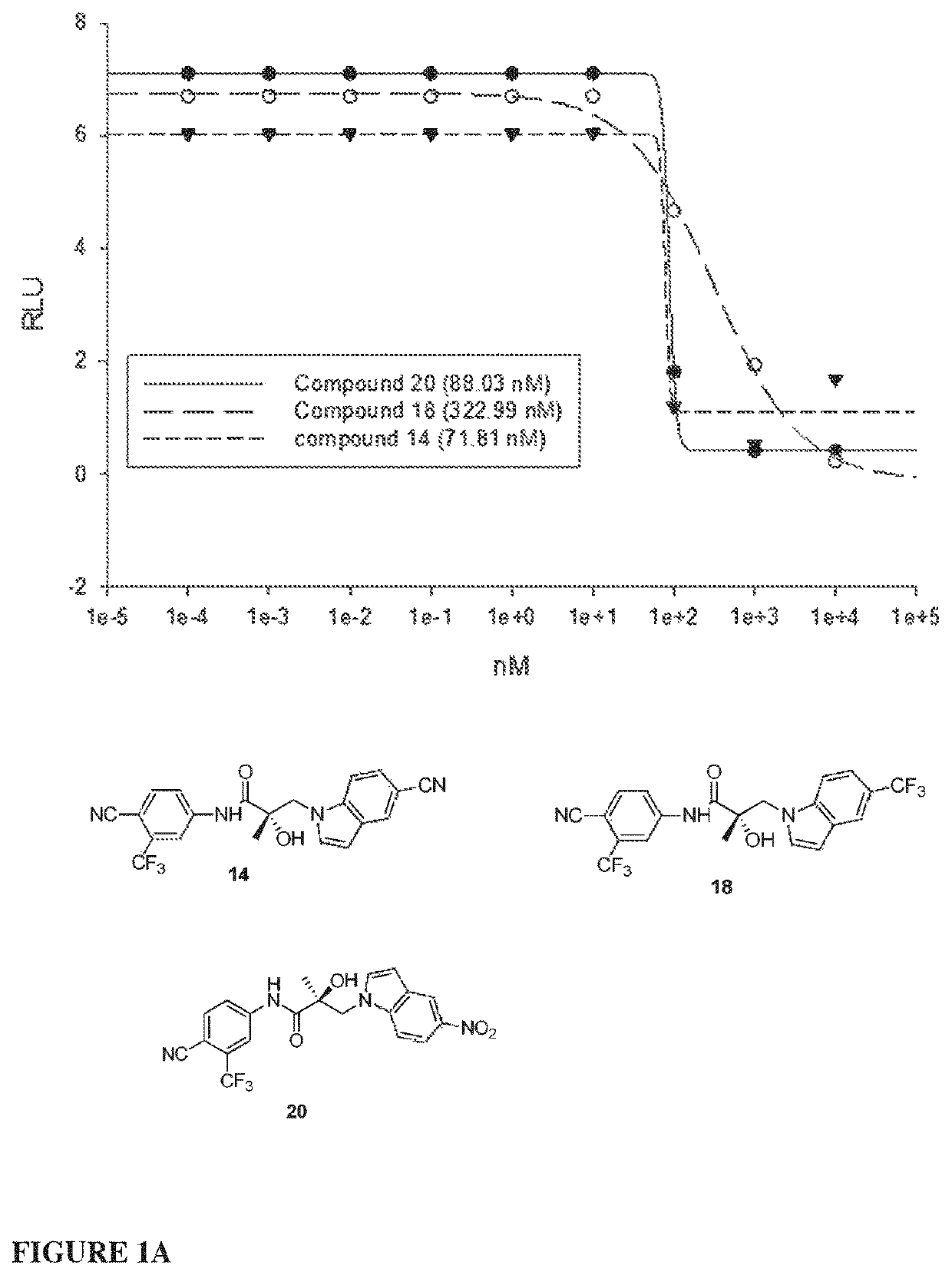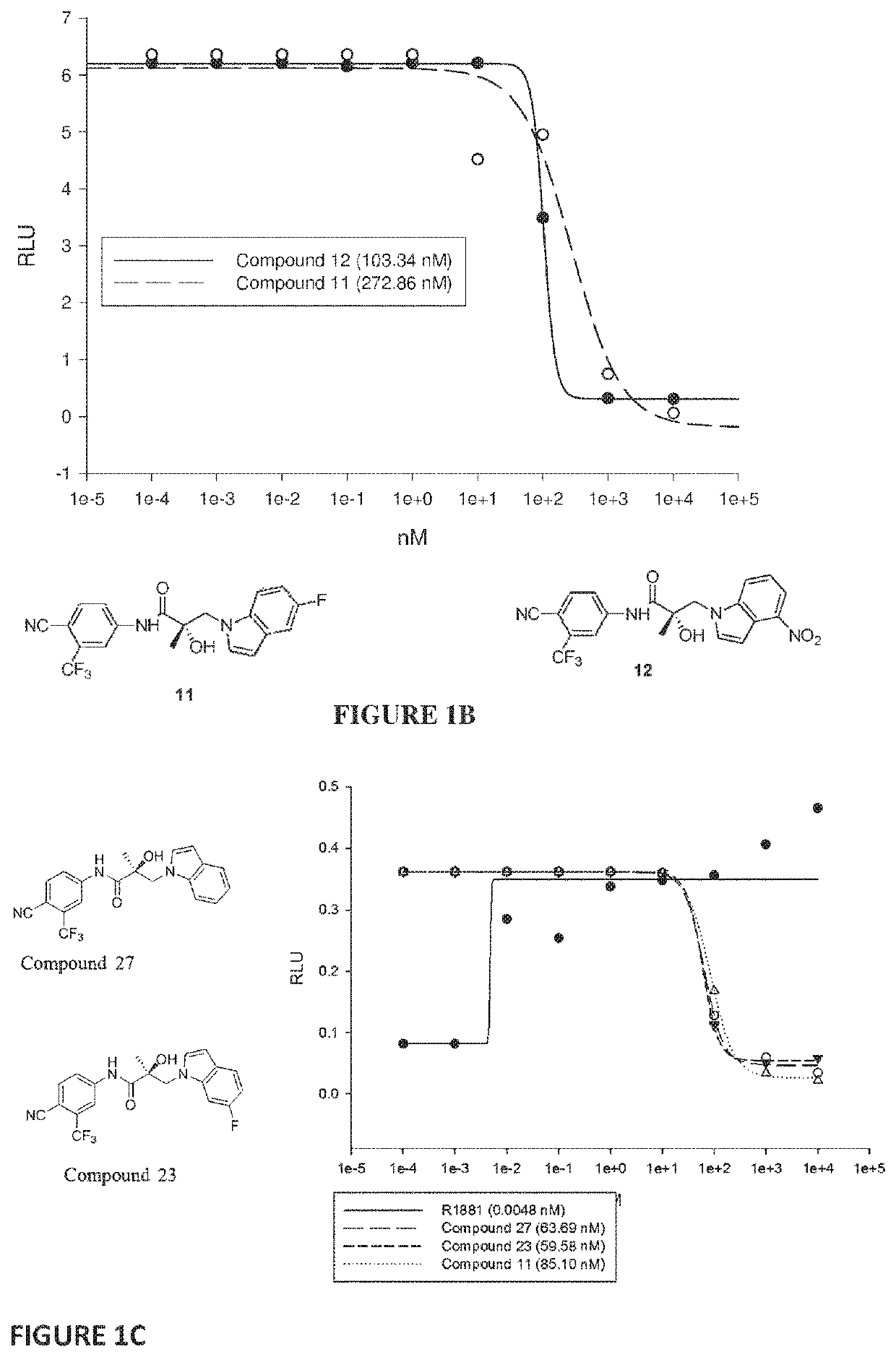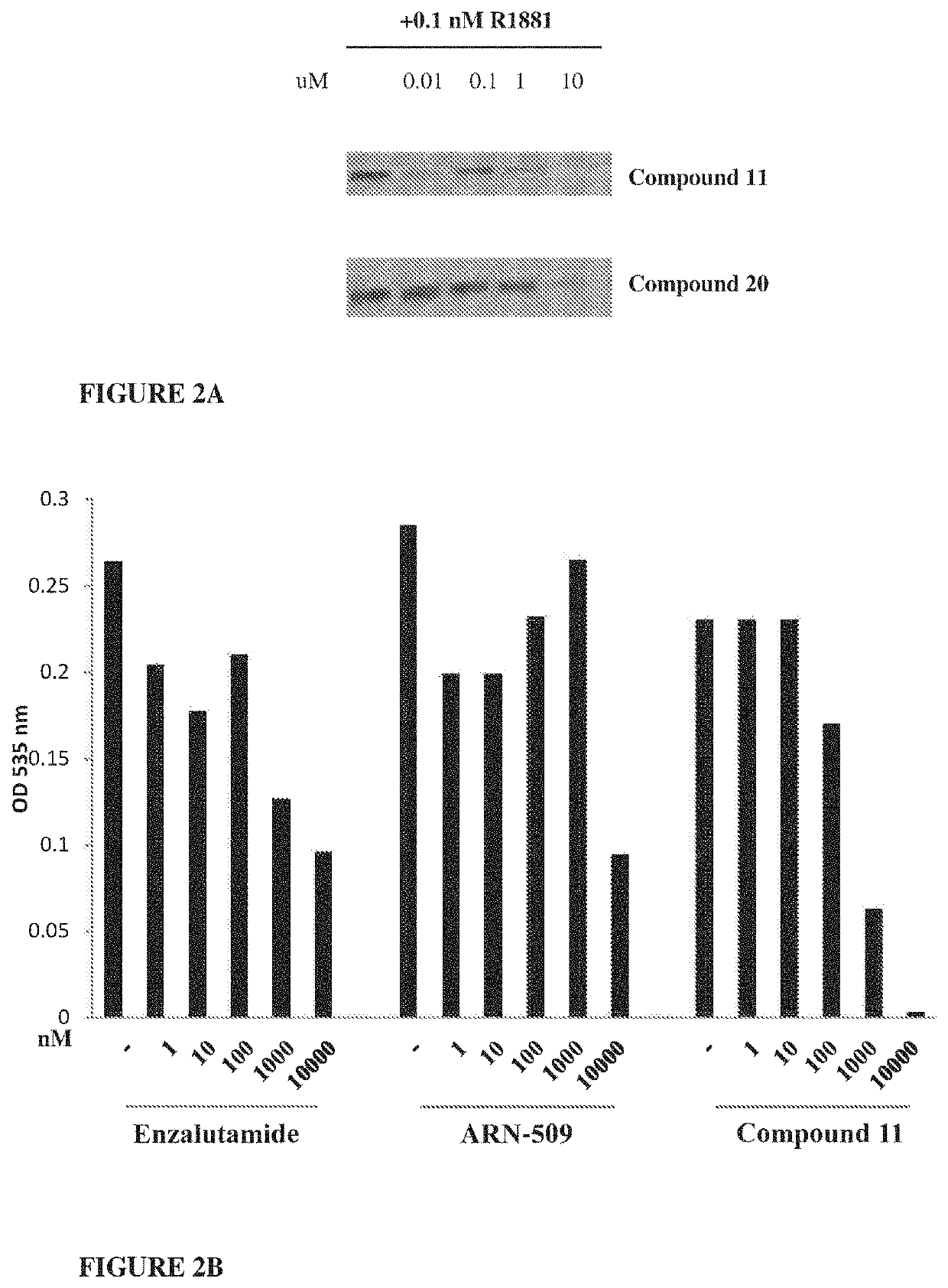Selective androgen receptor degrader (SARD) ligands and methods of use thereof
a selective androgen receptor and ligand technology, applied in the field of selective androgen receptor degrader (sard) ligands, can solve the problems of unfavorable sexual effects, unfavorable antiandrogens, and inability to inhibit growth, so as to reduce the levels of ar-full length and the level of ar-splice variants
- Summary
- Abstract
- Description
- Claims
- Application Information
AI Technical Summary
Benefits of technology
Problems solved by technology
Method used
Image
Examples
example 1
Synthesis of Indole / Pyrrolo-Pyridine SARD Compounds of this Invention
[0924]
(2R)-1-Methacryloylpyrrolidin-2-carboxylic Acid (2)
[0925]D-Proline (14.93 g, 0.13 mol) was dissolved in 71 mL of 2 N NaOH and cooled in an ice bath. The resulting alkaline solution was diluted with acetone (71 mL). An acetone solution (71 mL) of methacryloyl chloride (13.56 g, 0.13 mol) and 2 N NaOH solution (71 mL) were simultaneously added over 40 min to the aqueous solution of D-proline in an ice bath. The temperature of the mixture was kept at 10-11° C. during the addition of the methacryloyl chloride. After stirring (3 h, room temperature (RT)), the mixture was evaporated in vacuo at a temperature at 35-45° C. to remove acetone. The resulting solution was washed with ethyl ether and was acidified to pH 2 with concentrated HCl. The acidic mixture was saturated with NaCl and was extracted with EtOAc (100 mL×3). The combined extracts were dried over Na2SO4, filtered through Celite®, and evaporated in vacuo ...
example 2
Synthesis of Benzimidazole and Indazole SARD Compounds of this Invention
[0963]
(S)-N-(4-Cyano-3-trifluoromethyl-phenyl)-3-(5-fluoro-benzoimidazol-1-yl)-2-hydroxy-2-methyl-propionamide (C19H14F4N4O2) (70)
[0964]To a solution of 5-fluoro-1H-benzoimidazole (0.50 g, 0.00367 mol) in anhydrous THF (10 mL), which was cooled in an ice water bath under an argon atmosphere, was added sodium hydride (60% dispersion in oil, 0.44 g, 0.011 mol). After addition, the resulting mixture was stirred for 2 h. (S)-N-(4-Cyano-3-(trifluoromethyl)phenyl)-2-methyloxirane-2-carboxamide (1.29 g, 0.00367 mol) was added to above solution, and the resulting reaction mixture was allowed to stir overnight at RT under argon. The reaction was quenched by water, extracted with ethyl acetate. The organic layer was dried with MgSO4, filtered, and concentrated under vacuum. The product was purified by a silicon gel column using methylene chloride and methanol (19:1) as eluent to afford 0.17 g of the desired compound as wh...
example 3
Synthesis of Quinoline, Isoquinoline, and Indoline SARD Compounds of this Invention
Quinoline Compounds
[1001]
Isoquinoline Compounds
[1002]
Indoline Compounds
[1003]
[1004]General Procedure: Method A:
[1005]General scheme for the synthesis of indoline, quinoline and isoquinoline derivatives
[1006]
(2R)-1-Methacryloylpyrrolidin-2-carboxylic Acid (2R)
[1007]D-Proline (1R) (14.93 g, 0.13 mol) was dissolved in 71 mL of 2 N NaOH and cooled in an ice bath; the resulting alkaline solution was diluted with acetone (71 mL). An acetone solution (71 mL) of methacryloyl chloride (13.56 g, 0.13 mol) and 2 N NaOH solution (71 mL) were simultaneously added over 40 min to the aqueous solution of D-proline in an ice bath. The temperature of the mixture was kept at 10-11° C. during the addition of the methacryloyl chloride. After stirring (3 h, room temperature (RT)), the mixture was evaporated in vacuo at a temperature at 35-45° C. to remove acetone. The resulting solution was washed with ethyl ether and was ...
PUM
| Property | Measurement | Unit |
|---|---|---|
| structure | aaaaa | aaaaa |
| AR-full length | aaaaa | aaaaa |
Abstract
Description
Claims
Application Information
 Login to View More
Login to View More - R&D
- Intellectual Property
- Life Sciences
- Materials
- Tech Scout
- Unparalleled Data Quality
- Higher Quality Content
- 60% Fewer Hallucinations
Browse by: Latest US Patents, China's latest patents, Technical Efficacy Thesaurus, Application Domain, Technology Topic, Popular Technical Reports.
© 2025 PatSnap. All rights reserved.Legal|Privacy policy|Modern Slavery Act Transparency Statement|Sitemap|About US| Contact US: help@patsnap.com



